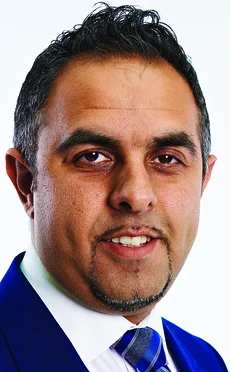
Best liquidity provider for NDFs and Best algo provider: BNP Paribas


Long known as a pioneer in FX algorithms, BNP Paribas has broadened its footprint to extend its reach to other segments of the FX market such as non-deliverable forwards (NDFs).
The demand for NDFs has piqued client appetite for an even broader set of NDF products. Leveraging its leading position in the FX algorithm space, BNP Paribas became one of the first major banks to roll out NDF algorithms. It swiftly followed with the introduction of Group of 10 NDFs and more recently unveiled algorithms that allow clients to trade some of the most common NDF currencies, such as the Taiwan dollar, Korean won and Indian rupee, against the euro in one trade.
Given that emerging market NDFs have, since their inception, been almost exclusively traded against the dollar, liquidity in NDF crosses is still limited. Therefore, BNP Paribas has had to introduce a special service to enable its clients to trade the euro and sterling against NDF currencies. However, instead of obliging its clients to enter into complementary trades to achieve their objectives the bank itself manages the exposure of the different legs of the trades involved to offer what is at the end a single NDF that can be traded via an algo.
BNP Paribas’s ability to offer such a broad set of NDF products would not be possible were it not for the bank’s global reach. As a bank with presence in a swath of local markets, BNP Paribas is able to take advantage of its position in these markets to build a broad NDF franchise, putting it ahead of other liquidity providers not present in those markets.
Having a local presence in many countries where NDFs predominate is an important part of BNP Paribas’s success within the realm of NDFs because the bank is able to tap into the local market and make that liquidity available to other entities within the bank and to its end-clients.
“What underpins our success in the NDF space is having local market presence where our traders on the ground in those countries allows us to source a larger liquidity pool for our clients,” explains Asif Razaq, global head of FX algo execution at BNP Paribas. “That is essentially the basis for any good NDF offering. That local presence and our connection to local counterparties gives our NDF pricing capability much more power.”

Making local liquidity available to clients not physically present in markets – in most of Asia, for example – isn’t much of an issue since those markets are highly electronified, but in other regions, such as Latin America, it is more of a challenge.
The progress of electronification of FX in the Latin America region is mixed, with Brazil at the forefront, Colombia closely behind and others such as Chile and Peru catching up.
To source liquidity in Brazil, for example, the bank taps into liquidity from onshore exchanges and makes it available to its principal or agency clients offshore. Replicating that strategy elsewhere in the Latin America region requires some innovative thinking but in essence involves trading or accessing credit directly with local banks on a bilateral basis to create a large enough liquidity pool for its NDF franchise.
“What we’re essentially doing is bringing that onshore liquidity into an offshore environment through our internal electronic exchange, Bix, and using our electronic market strategies to make that liquidity available to clients not based in that country,” explains Razaq. “We then make those prices available to our clients on our single dealer platform, Cortex, as risk transfer prices. For clients who want to trade via an algo they can tap that liquidity or they can access external venues and benefit from both worlds.”
Keeping it simple
BNP Paribas’s motto on algos has been to keep them simple. The bank launched its algo suite in 2013 with just three algos – Chameleon, Iguana and Viper – to cater for the specific characteristics of the FX market and offer its clients the ability to execute their trades quickly, trade within a particular timeframe or apply a certain amount of discretion to their trading.
“That’s been one of the key success stories at BNP Paribas,” says Razaq. “Rather than constantly building a new multitude of algo strategies and repitching them to clients, we wanted to keep that approach very simple and only have a small family of algos.”
Today, BNP Paribas’s algo suite still offers those same three basic algos – and just those three – albeit somewhat smarter versions than those originally rolled out nearly a decade ago. Chameleon is on its fifth version, while Viper is on version four and Iguana version three.
“We’re constantly evolving and building the latest version of these algos by making them smarter or increasing the scope of what these algos can do,” says Razaq. “With the flip of a parameter the algo can behave in a very different way to meet the varying needs of clients. That’s been one of the key success stories.”
In making its algos smarter, BNP Paribas has been deeply influenced by the work done by the technology industry in Silicon Valley. The bank looked closely at how the tech industry engages with customers to make their products indispensable and decided to integrate these concepts into the FX market.
This has led to such features as BNP Paribas clients being able to drag and drop their algos into different parts of a simulation environment to gain insight into their expected performance at different times of the day. Algos at BNP Paribas have even gained a virtual voice akin to their Silicon Valley counterparts – which provides traders with a digital assistant that actively informs as to the state of the market, how an algo is performing and can respond to any question a trader wishes to ask.
The use of this type of technology for financial market trading works surprisingly well, Razaq explains, because many traders are already comfortable using the same type of tech in their lives outside the workplace.
Recently, BNP Paribas has elevated algo technology by introducing the concept of ‘master algos’, which are designed to solve complex and time-consuming problems its clients have in their day-to-day trading. So rather than having an algo trade just one currency pair in one direction, BNP Paribas has created master algos that are given a complex task and conferred the ability to call upon the bank’s basic algos to fulfil that task as necessary.
Two such master algos have been introduced to date: Gamma and Rex. While Gamma focuses on gamma delta hedging and Rex looks at portfolio optimisation, the dynamics that both master algos use is to take away the laborious task of execution from the trader and automate the process to achieve its end goals. Despite the automated process, the trader retains full control of the process and can intervene any time it is deemed necessary.
“The master algo presents the client with an unbiased preview of what it intends to do and what it thinks is the best way to execute. The client can then delegate that to the algo, which will then send out its minions – Chameleons, Vipers and Iguanas or risk transfer pricing – to the market to work that basket of trades against the best prices,” explains Razaq. “But what’s even more powerful is if the trader doesn’t agree with the master algo’s view, the client can change and override the process with different execution parameters that the algo then implements according to the client’s view.”
BNP Paribas was voted Best liquidity provider for NDFs and Best algo provider at the 2022 FX Markets e-FX Awards.
Sponsored content
Copyright Infopro Digital Limited. All rights reserved.
As outlined in our terms and conditions, https://www.infopro-digital.com/terms-and-conditions/subscriptions/ (point 2.4), printing is limited to a single copy.
If you would like to purchase additional rights please email info@fx-markets.com
Copyright Infopro Digital Limited. All rights reserved.
You may share this content using our article tools. As outlined in our terms and conditions, https://www.infopro-digital.com/terms-and-conditions/subscriptions/ (clause 2.4), an Authorised User may only make one copy of the materials for their own personal use. You must also comply with the restrictions in clause 2.5.
If you would like to purchase additional rights please email info@fx-markets.com